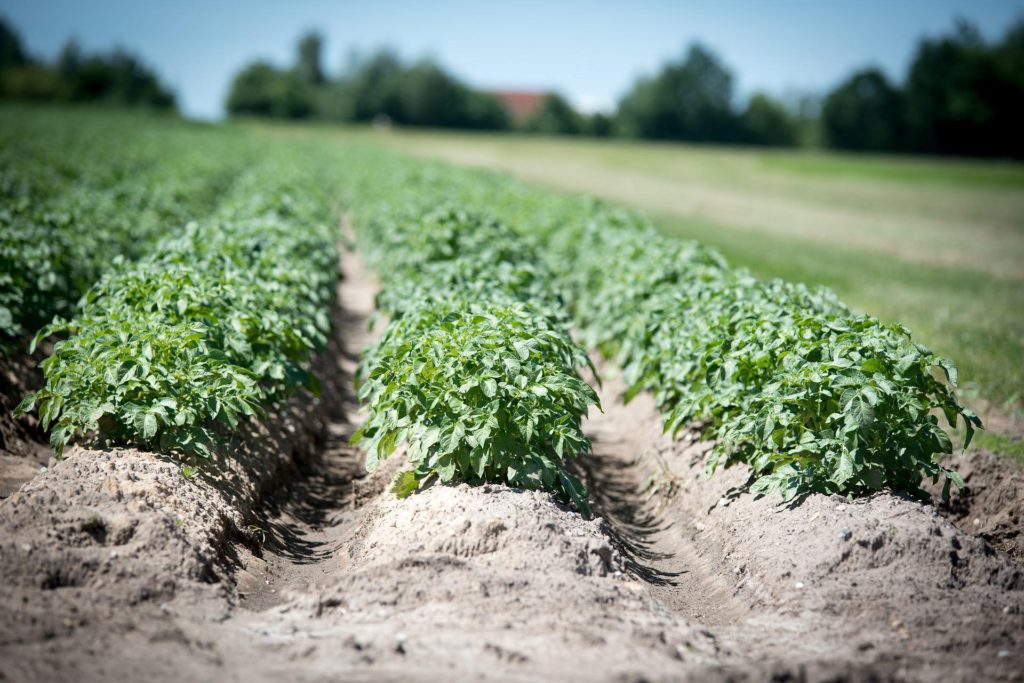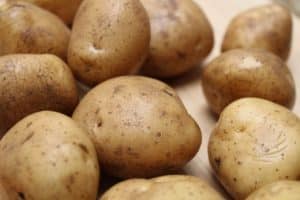Table of Contents
What Are MainCrop Potatoes?
Are you like me and want to know ‘What maincrop potatoes were?’ Then in this article, we’ll talk all about them.
Maincrop potatoes are a type of potato you grow in the United Kingdom. They are typically larger than other types of potatoes and have a higher starch content. This makes them ideal for use in dishes such as roast potatoes, chips, and mashed. You typically harvest between September and October.
Where did Maincrop potatoes ordinate?
The maincrop potato is believed to have originated in South America, specifically in the countries of Peru and Chile. From here, they were introduced to Europe by Spanish explorers during the 16th century. They quickly became a popular crop in many European countries, including the United Kingdom.
What is the best climate for Maincrop potatoes?
Maincrop potatoes prefer a cool climate and do best when planted in the spring. They need around four to five months to mature, so it is important to choose a potato variety that will be ready to harvest before the first frost. It’s possible to grow these in most parts of the United Kingdom, although they may not produce as large of a crop in more southern areas.
What is the difference between Main Crop and early potatoes?
Maincrop potatoes are grown to be harvested later in the season, usually from late July onwards. They are larger than early potatoes and have a higher starch content, making them perfect for roasting, baking and chips. They will store well over winter if kept in the right conditions.
Harvest Early potatoes from June onwards. They are smaller and have a lower starch content, making them ideal for boiling or steaming. Earlies do not store as well as maincrop potatoes.
What are the best ways to cook Maincrop potatoes?
There are many ways to cook maincrop potatoes, but some of the most popular methods include roasting, baking and chips.
Roasting gives them crispy skin and fluffy inside. To roast, simply preheat your oven to 200 degrees Celsius and wash your potatoes. Cut them into even-sized pieces and toss in olive oil and sea salt. Roast for 25-35 minutes, or until golden brown.
Baking is a healthier alternative to fried. To bake, preheat your oven to 220 degrees Celsius and wash your potatoes. Cut them into even-sized pieces and toss in olive oil and sea salt. Bake for 30-40 minutes, or until golden brown.
Chips are a classic way to cook maincrop potatoes. Preheat your oven to 190 degrees Celsius and wash your potatoes to make chips. Cut them into even-sized pieces and toss in olive oil and sea salt. Bake for 20-30 minutes, or until golden brown.
Do you have to peel maincrop potatoes?
No, they do not need to be peeled. Simply wash them thoroughly to remove any dirt or debris.
What types of Maincrop potatoes are there?
There are many different types of maincrop potatoes, including Maris Piper, King Edward and Desiree.
Maris Piper is one of the most popular varieties. They have creamy white flesh and light brown skin. They are versatile and can be used for roasting, baking, chips or boiling.
King Edward has light brown skin and creamy white flesh. They are best suited for roasting or baking, but can also be used for chips or boiling.
Desiree has red skin and creamy white flesh. They are versatile and can be used for roasting, baking, chips or boiling.
Chitting potatoes to get them off to a Good Start
Chitting is the process of encouraging your first early potatoes to sprout before planting. Place them in a cool, light place such as an unheated greenhouse or windowsill. Once the potatoes have sprouted, plant them in the garden. Chitting potatoes is not essential, but it can help to give your potatoes a head start. It is also a good way to check that your potatoes are still viable and have not gone bad.
How to plant Potatoes Tubers
Planting usually takes place in late March or early April when the soil is warm enough. You should plant them in well-drained soil in a sunny spot.
You plant Maincrop potatoes as ‘seed potatoes. This means that they have been specifically grown to produce new plants, rather than being bought from a supermarket. You can buy Seed potatoes from garden centres or online.
To plant, dig a trench in the soil and place the seed potatoes about 20cm apart. Cover with soil and water well. They will take around 10-12 weeks to mature. When they are ready to harvest, the leaves will start to turn yellow and die back. This is a good time to dig up the potatoes.
How to care for Maincrop potatoes
Store Maincrop potatoes in a cool, dark place with plenty of ventilation. The ideal temperature for storage is between 4-10 degrees Celsius. Do not store in the fridge, as this will cause them to turn sweet.
Maincrop potatoes can last for several months if stored properly. However, once they’ve started to sprout, use them within a few days.
When you are ready to harvest, you should dig them up carefully so as not to damage the tubers. You can eat Maincrop potatoes immediately or store them for later use.
Other types of potatoes (First & Second Earlies)
As well as first early potatoes, there are also second early and maincrop. Harvest Second early potatoes a little later than the first earlier, from July to September. Read our blog about the difference between First, Second and main crop potatoes.
Conclusion
Maincrop potatoes are a versatile and delicious type of potato that is popular in the United Kingdom. Cook them in many different ways, including roasting, baking and chips. You don’t need to peel Maincrop potatoes and you can store them for several months. When maincrop potatoes are ready to harvest, dig them up carefully so as not to damage the tubers.
No matter what type of Maincrop potato you choose, you’re sure to enjoy the delicious flavour and versatility that they offer. So why not give them a try in your garden this year? Please make sure you water plants regularly, especially during dry periods.


